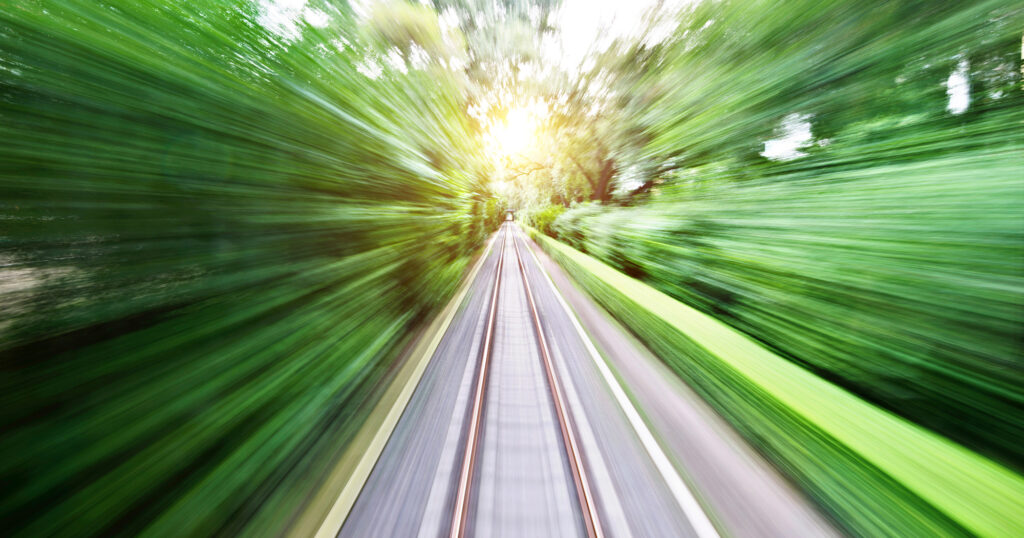When Hurricane Ida struck eight US states in 2021, the rail industry was among the hardest hit, losing millions of dollars in operational downtime and structural damage to infrastructure.
Amtrak, America’s intercity passenger rail road operator, was among the companies affected, incurring seven-figure damage to various stations and severe service disruptions, as water submerged stretches of track.
While it may have been a once-in-a-decade storm, the sector has since been rocked by a series of extreme weather events, including an extended heatwave in July that same year.
The heat wave decimated Amtrak’s seasonal budget for ‘heat days’ and forced the operator to give slow speed orders for more days than planned.
This impacted corporate performance and customer experience of the network, explained Director of Sustainability, Kara Oldhouser – a speaker at this year’s Rail Decarbonisation Conference.
“As we do every year, we had a number of heat days built into our summer schedule last year, but the stretch of high temperatures tested our system,” she said.
Today, Ms Oldhouser is learning from past data and preparing the network for greater climate resilience.
She expects previous allowances for extreme weather to fall short in the face of global warming and is working across departments to help Amtrak adapt all aspects of the business.
“Climate conditions are changing so quickly that we need to start adapting our business operations to keep up,” she said.
Planning for the next 50 years of climate change
Amtrak has already performed a climate vulnerability assessment for its Northeast Corridor and will have expanded this to its national network beginning in September 2023.
In addition, it has received historic funding of $66 billion and is taking it upon itself to revise design standards across the business, in the absence of national guidelines.
“We are reviewing the standards used by architects, engineers, teams that manage customer facing stations, and maintenance shops.
“Essentially we are leveraging climate data and identifying places where there are ‘climate gaps’ in our operation, or where we aren’t aligned with our net zero ambitions.”
Through this review, Amtrak is exploring where it can amend language or initiate a capital planning process to give staff the resources they need to build climate-ready assets.
“Whether a section of bridge, a signal hut, or a stretch of track, it needs to be able to withstand the climate stressors that are testing our system – and engineers need to know best practice for this.”
As one key example, Amtrak is ensuring its HVAC systems can keep pace with higher temperatures during slow speed orders.
“On really hot days, if we need to run our trains more slowly, our HVAC systems need to keep working and maintain comfortable and safety of passengers. Factoring this into design standards is really important. We can’t rely on older standards, as they are no longer fit for purpose.”
Amtrak is also exploring ways it can build sustainability standards into its real estate lease agreements with station locations it occupies as a tenant.
“For example, if the station is in an area that is starting to see signs of water resource constraints, we can bring recommendations for water conservation to the landlord’s attention, which would support the operation of the station and get them on board with our sustainability objectives,” Ms Oldhouser said.
Getting a firm handle on data projections
Amtrak is leveraging data from Hurricane Ida and other past climate stressors to model how future resilience investment should be spent.
“The idea is to connect a GIS map, climate data, and rail road asset information to help us understand where an asset sits in terms of various climate hazards like the floodplain, heat, or storm surge and sea level rise.”
While still under development, it is hoped the tool will help Amtrak review solutions to protect its assets.
“This is really important for us. For example, William H Gray III Station in Philadelphia, which was built in 1923 and has never flooded before, saw flooding from Hurricane Ida and close to $4 million in damage.
“This station has some of our busiest customer traffic outside of NYC, so it is important to assess the probability of future damage and ensure we are taking appropriate action.”
New era of rail
Despite the challenges ahead, Ms Oldhouser says it is an exciting time to be working at Amtrak.
“We are focussed on delivering a new era of rail – and I feel that so strongly with our net zero and mitigation work. There is a lot of growth and reorganisation to prepare our workforce and operation for upgrades and renewals worth $66billion.
“It’s such an exciting time to be at Amtrak. We are taking an old mode of transportation and making it modern, safe and climate ready.”
Talking more about Amtrak’s climate resilience and mitigation strategy, Kara Oldhouser will present at the upcoming Rail Decarbonisation Conference, hosted by Informa Connect.
This year’s event will be held 5-6 September in Melbourne.
Learn more and register your place here.
